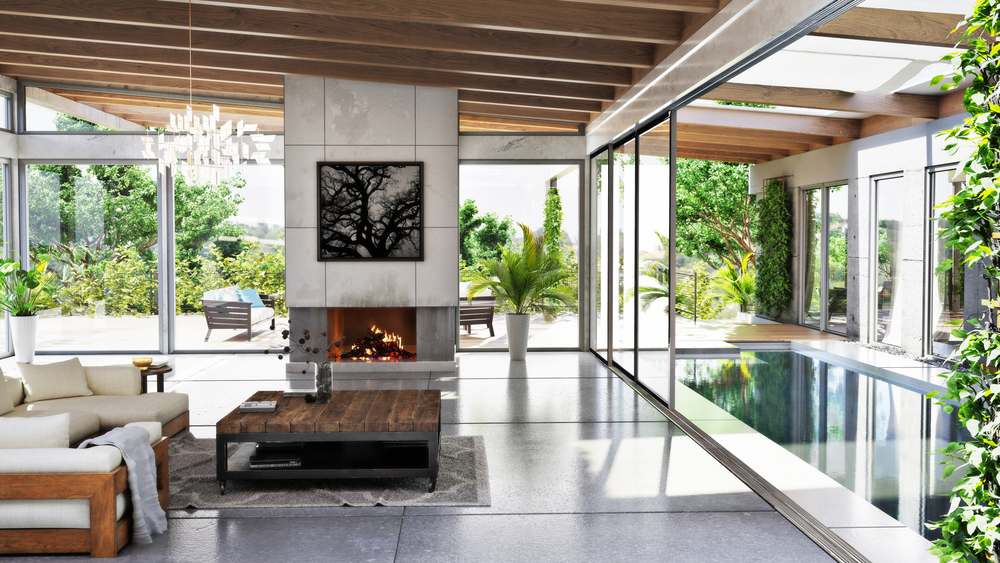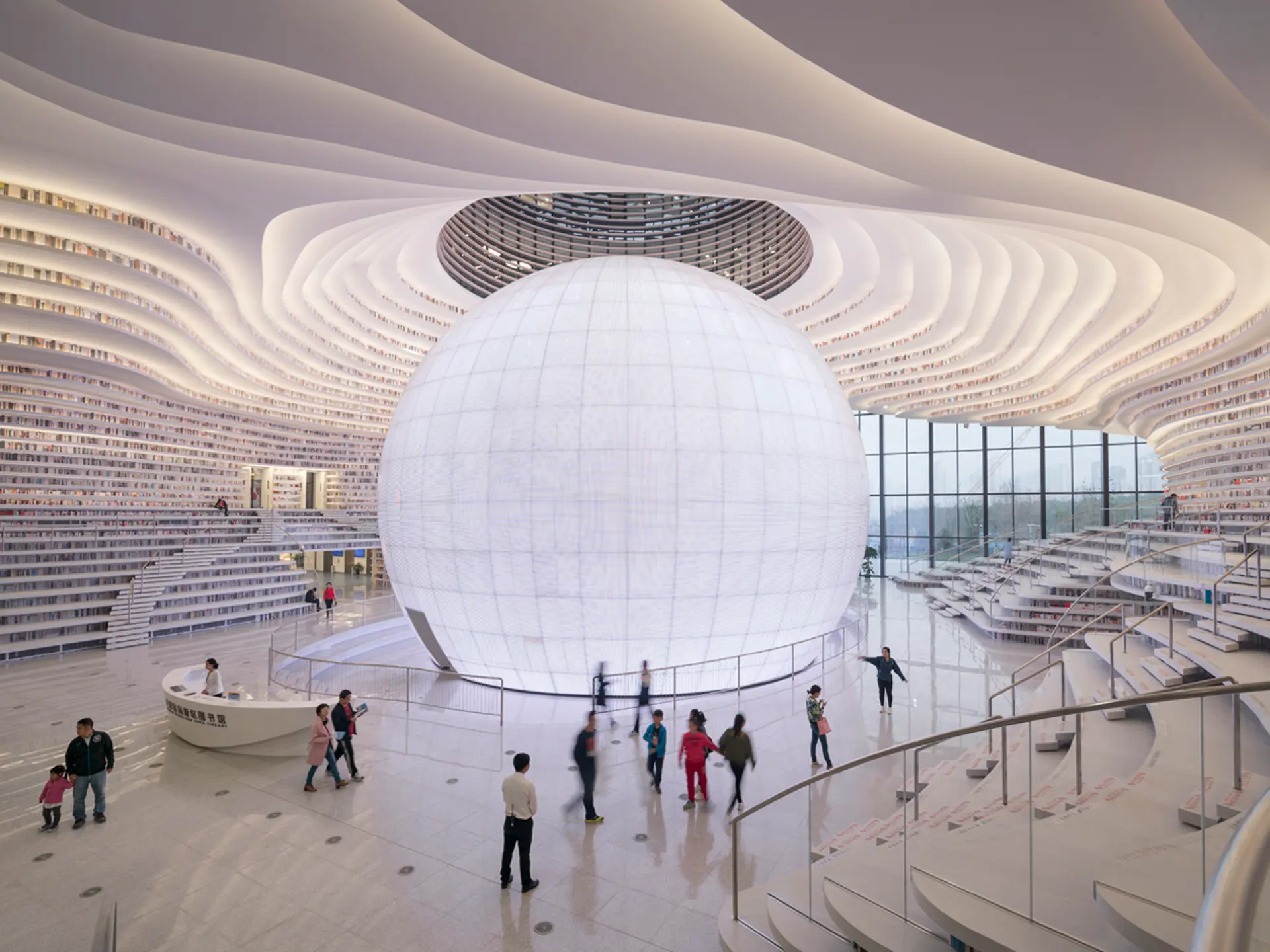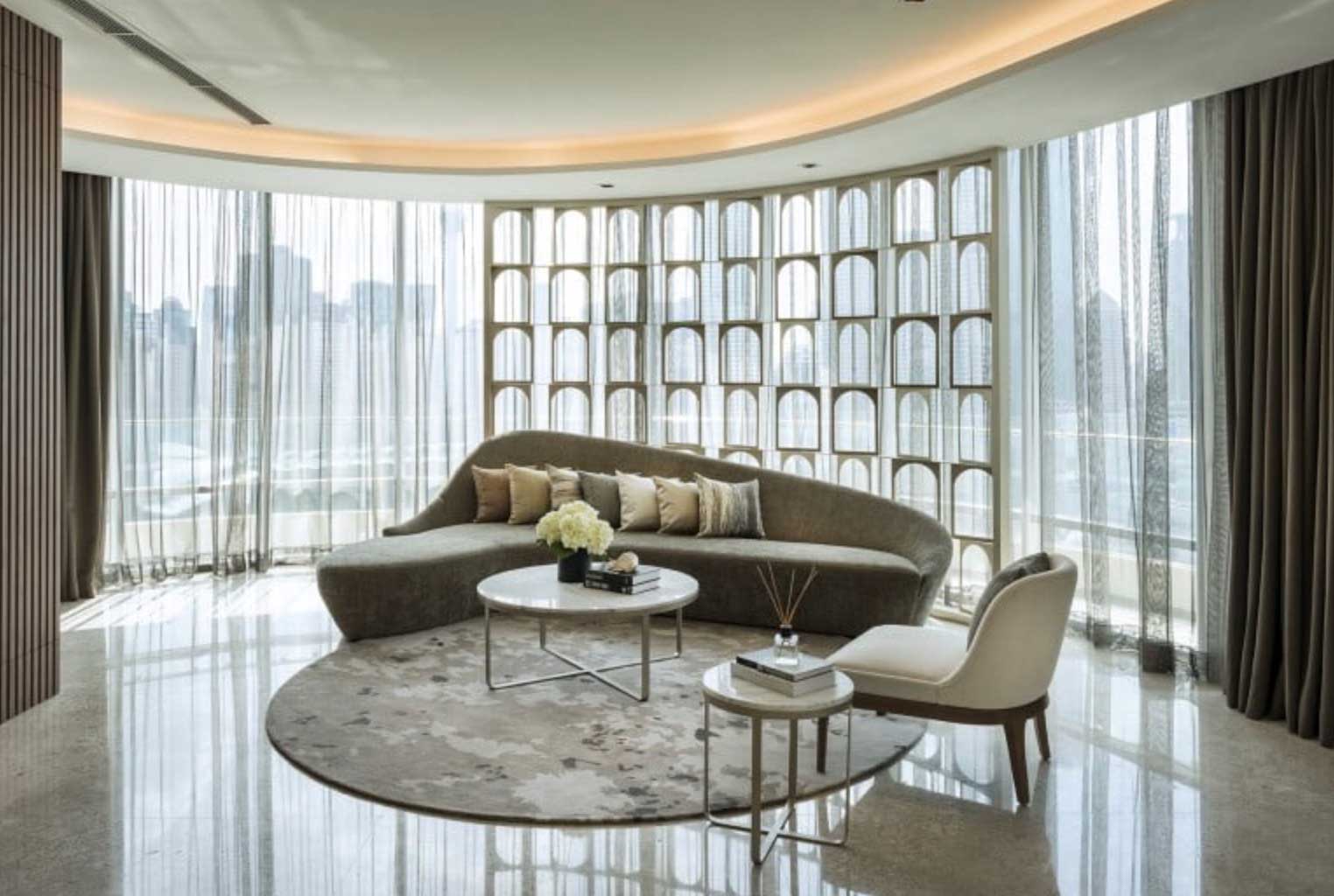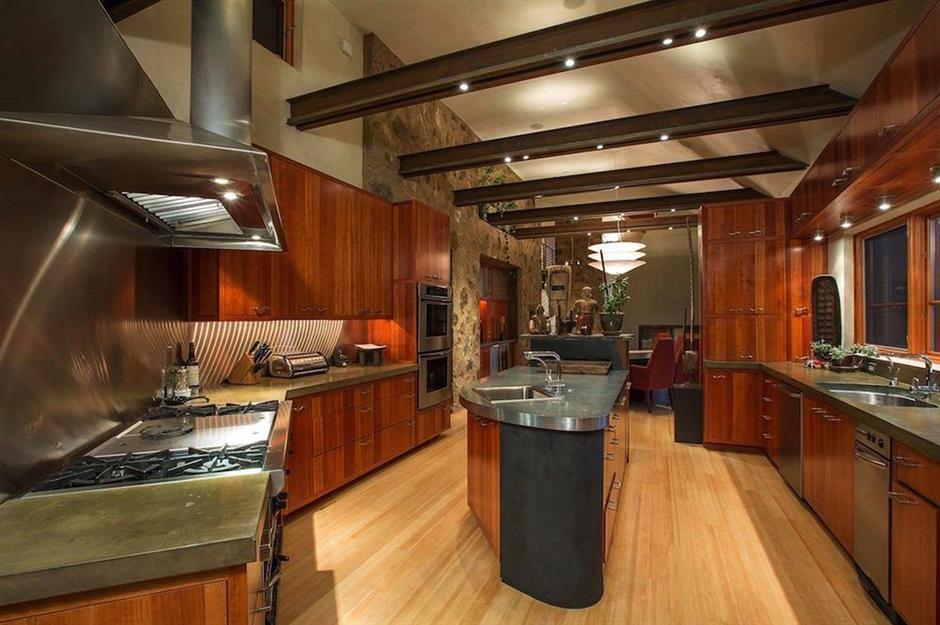Wellness architecture has been a thing for several years now, but still mostly an overlooked aspect of newly built architecture in both residential homes and commercial buildings.
While builders strive for achieving a net zero home – one that generates all the energy needed on its own, the experience of the space is still somewhat lacking in providing for better health, both physically and mentally.
What Is Wellness Architecture?
Simply put, wellness architecture considers the overall well-being of the occupants. This includes indoor air quality, lighting, and using plants and nature to create calming environments (called biophilic design).

The Global Wellness Institute created the Wellness Architecture & Design Initiative for the purpose of raising awareness of how our surroundings directly and profoundly impact us.
This initiative focuses on elevating and amplifying wellness covering your physical, intellectual, emotional, and spiritual well-being. Now if we can just get the word out to new home builders.
We mentioned in another article how lifestyle trends have changed where people would rather have joyful experiences than own things, and wellness architecture ties the two together, creating an ongoing enjoyable lifestyle in a home you own.
While many builders emphasize amenities like tankless hot water heaters, solar panels, and sustainable building materials such as bamboo hardwood flooring, this only touches on the total package we’d like to see.
We’ll bypass those “shiny dangly brochure bullet points” homebuilders provide and dive into the other important elements currently being overlooked.
Air Quality
We’ve come a long way from shoveling coal into a furnace for a blast of warmth, air quality be damned. In fact, when it comes to wellness architecture, air quality is the new zenith trying to be achieved when running the HVAC.
A crucial element of this is the air return intake on your a/c system. This is where your filter is. This reduces pollutants from circulating throughout the home.

Unfortunately, manufacturers of the actual a/c units have some catching up to do. Why is this? Because the air filters are the heart and soul of providing clean air, especially when they start meeting High-Efficiency Particulate Air standards (HIPA).
Most current HVAC systems installed in homes metaphorically choke on the density of these highly efficient filters, creating faster wear and tear. Currently, these are only best suited for stand-alone, in-room systems.
You could opt to live on one of these top luxury houseboats, with plenty of fresh air circulating on the waterfront!
How Do We Measure Indoor Air Quality?
Measurement breaks down into four categories – outdoor sources, occupant-related activities, ventilation systems, and building materials.
Outdoor sources are the pollutants we live with, and how well we can filter them out of our indoor spaces.

Occupant-related activities follow more along the lines of lifestyle choices like smoking or burning dinner. So now all your cards are betting on your HVAC system to clean up after yourself.
Building materials have come a long way for sustainability and health-conscious products. Furniture, paints, and flooring now have low or no volatile organic compounds (VOC), which have been shown to have long-term adverse health effects.
How Do We Achieve Indoor Air Quality?
Natural ventilation is a great way to go although being at the mercy of mother nature isn’t always doable, especially in the summer and winter.
Therefore, you’ll want to find a good hybrid system where you can capitalize on a cool breeze when available but also have an improved ventilation system that purifies the indoor air.

This all circles back to how the architecture is designed, utilizing the building’s orientation and windows to best utilize the outdoor conditions.
You want to also make sure an adequate amount of air changes hourly in each room. At the end of the day, fresh air still rules when it comes to an alert, healthy state of mind.
Lighting
Indoor lighting is actually a pretty big deal as we discussed in our post about the pseudoscience of Chromotherapy (sometimes called color therapy or chromotherapy).
There are minimum standards and requirements for lighting and the codes mostly focus on energy efficiency.
Architects can really up their game with this one. Just follow the bread crumbs – lighting sets the mood and our mood affects our mental wellness.
What’s Circadian Lighting?
Circadian lighting is the concept that light can be used to support our health by minimizing the effect of electric light on the human circadian rhythm.
Our circadian rhythms are 24-hour cycles that are part of the body’s internal clock. This function carries out essential functions and processes, most importantly, our sleep-wake cycle.
Our brains release melatonin at night which puts us to sleep. In a nutshell, blue-enriched light stimulates biological activity during the daytime, and blue-depleted light calms down biological activity at night.

Long-term exposure at various intensities of blue light can affect our melatonin production, thus interrupting our sleep patterns and we all know a bad night’s sleep is not healthy.
How Can We Use Circadian Lighting Methods For Better Health?
Intensity Tuning and Color Tuning are easy solutions when it comes to improving architectural wellness.
Light has various color temperatures and controlling the lighting to produce cooler color temperatures during the day helps keep us alert while a higher color intensity represents sunrises and sunsets helping us wind down.
Therefore, not all lighting is created equal, and by strategically placing the proper lights in the right rooms your indoor space can better be utilized as a healthy environment.
Biophilic Design
Biophilic design is a way to mix nature with architecture, creating a healthier overall space. This includes natural lighting, natural ventilation, and plants. Hey, we’re not the only life form on this planet and a little interaction with nature always makes us feel happier.

In fact, biophilic design is known to decrease stress, enhance creativity, and accelerate recovery times from illness.
We already know the presence of water increases feelings of tranquility and in Japan, bamboo forests are known to be the best places to meditate and calm the mind. we just need to segue the outdoors to flow inside your home.
How To Achieve Biophilic Design?
From vertical gardens to indoor ponds to water elements, indoor gardens can thrive just as easily as if they were outside. You can go large or small, just keep adding plants till you feel relaxed.
A great example of architecture wellness that uses an eco-system on a large scale, is the Amazon Headquarters in Seattle, Washington. Designed by NBBJ, we find a giant sphere as part of the campus.
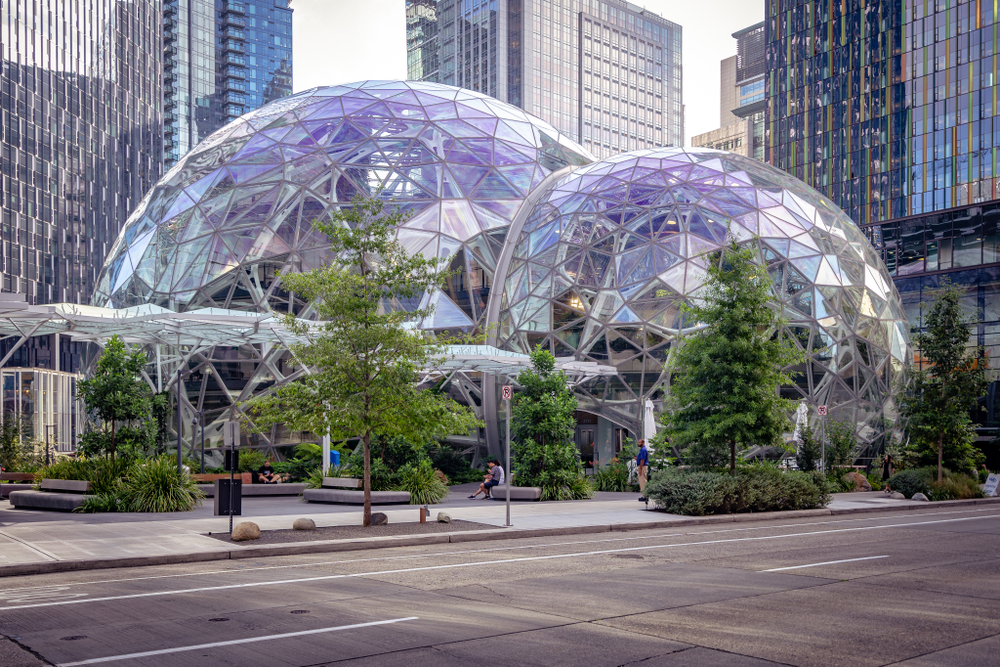
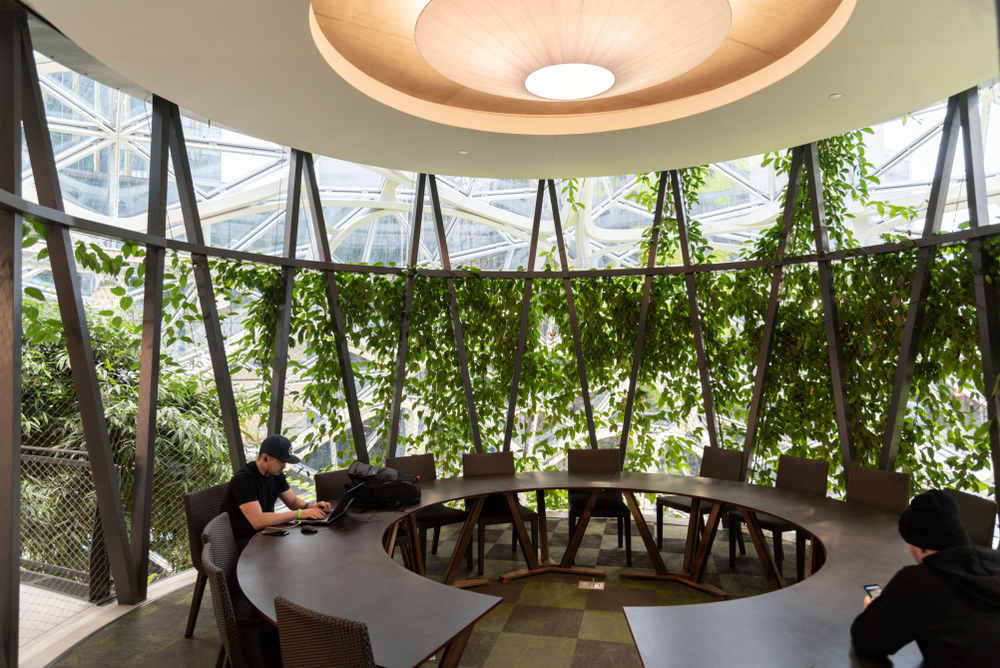
Used as an office building by day, at night this space transforms into a humid, hot space that allows the plants inside to thrive. This unique workspace has 150,000 plants from all over the world, and Amazon has hired a full-time horticulturist.
Wellness Room Design
We’re starting to see a lot of homebuilders clued into this important element of architecture wellness. Open floor plans, built-in wine coolers in the kitchen, and standard appliances like woks and pizza ovens all modernize how people now live.
Oversize, floor-to-ceiling windows, clerestory windows, and skylights also do wonders for utilizing natural light, keeping our circadian rhythms in check which promotes better mental health.
This also encompasses how a room is furnished. We see some excellent examples of how color and furnishings create a soothing, comforting space from our top Austin interior designers as well as those top designers in Los Angeles.
One aspect that seems to be neglected, is the kitchen island. Especially in modern homes where the norm is maintaining straight lines and making boxy centerpieces to the kitchen design.
Keeping up with the times, the kitchen island is often used as the dining table, reflecting our casual lifestyle. Eating is more of a social event, and interaction with each other is awkward if everyone is facing the same way.

If two of you go into a restaurant, do you both sit on the same side of the table? Seriously, let’s start seeing roundness in our kitchen islands, where friends and family can look at each other while talking.
Of course, to further enhance wellness architecture in room design, all of the above-mentioned elements need to be implemented to create an undeniable space that promotes health at all levels.
Active Design – Redefining Your Workout Space
This aspect centers around designing space for how we like to exercise. We hope you still don’t think a good workout can only be achieved in the darkest corner of your garage.
Time to let the car have that space and to make your own little heaven on earth for clearing the mind and building muscle.
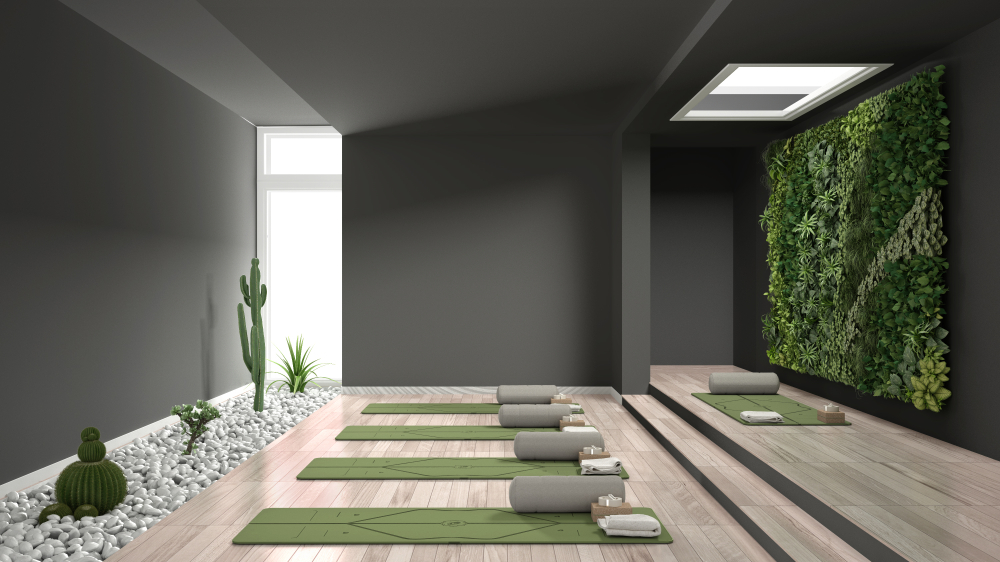
Remember, comfort is related to happiness and a quiet space with natural light, Feng Shui, and even water elements can provide a much better overall approach to exercise.
If you can reduce the amount of closed space, all the better. The less confined we feel, the less stress we’ll have. Oddly, many of these studies have used fish which probably know a thing or two about confined spaces.
Let’s say you get to choose between a fishbowl or the open sea. Not a stretch to guess which would make us feel less stressed. But to make it official, there are scientific studies to back this up.
Conclusion
Sustainability is currently front and center with new construction, but the key features of wellness architecture still seem like an afterthought, with the health benefits taking the second stage.
Fortunately, lifestyle changes will force architects to adapt. The trend we’re seeing is that physical and mental wellness are all tied to the spaces we occupy whether we realize it or not. The meaning of “quality of life” is slowly shifting to architecture wellness.
